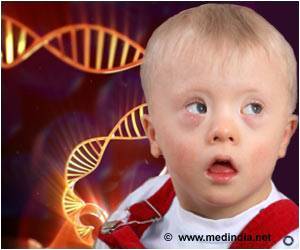Researchers at Montana State University have come out with a new report that explains how the DNA responds when it is exposed to ultraviolet light.

"Our paper advances foundational knowledge about how DNA responds to UV radiation. In our experiments, we observe the earliest events immediately after DNA is energized by UV radiation. These events determine whether or not DNA is damaged," said one of the paper's co-authors, Bern Kohler, an MSU professor in the Department of Chemistry and Biochemistry.
DNA is built like a staircase and carries genetic instructions that are unique to each person. It's very hardy and generally able to stand up to ultraviolet rays, but UV rays sometimes cause mutations. UV exposure is a major cause of skin cancer, and while there are nearly 5 million cases of skin cancer each year in the U.S. alone – and 9,000 related deaths – the numbers would be far worse if DNA were more easily damaged.
"UV is actually very damaging, yet our DNA is damaged less than expected," Kohler said. "In the early evolution of life on Earth when there was no ozone layer, the amount of UV would have been far higher and yet life, and the DNA that is central to life, survived. We've been trying to understand the molecular mechanisms that make DNA resist UV damage."
In a paper published July 28 in the online version of the scientific journal, "Proceedings of the National Academy of Sciences" (PNAS), Kohler and his colleagues from MSU, Utah and Italy describe how DNA has a super-fast way of shrugging off the UV threat.
Too quick for the eye to see, UV light causes an electron to be transferred from one base to another on a single DNA strand. A base is the smallest unit of the genetic code, a small molecule that constitutes an individual "rung" on DNA's ladder.
The finding is the latest in Kohler's 15-year search to understand what happens to DNA when it absorbs UV light.
Zhang came to MSU about two years ago, and his first job was building the instrument that's the only one of its kind in Montana and one of only a handful in the world. The instrument shoots extremely short pulses of ultraviolet light at DNA samples, then measures the vibrations created in DNA in response. The vibrations are so fast that Kohler describes their speed in terms of femtoseconds instead of nanoseconds. A femtosecond is one millionth of a nanosecond. A nanosecond is one billionth of a second.
By analyzing those vibrations, the research team was able to determine that one base in a single strand of DNA transfers an electron to an adjacent base on the same strand when excited by UV light (or radiation), Kohler said. He added that molecules constantly vibrate, and light absorption leads to even greater vibrations. Removing or adding an electron causes changes to the pattern of vibrations, and that is what the MSU team measured in the lab.
The instrument they used takes up most of a room in MSU's Chemistry and Biochemistry Building. It incorporates black boxes, mirrors, stacked razor blades, tiny plastic tubes and what looks like a fish tank, with every component having a purpose and a place on the steel optical tables that hold them. The razor blades, for example, block laser beams. The mirrors direct light to the "fish tank," which holds DNA samples. The air inside the tank is drier than any desert so it won't contain the water vapor or carbon dioxide that could interfere with experiments.
Zhang said it took him three months to develop the instrument. Kohler said the instrument was critical for the DNA study, but yet it is available to MSU undergraduates and others who are trained to use it.
Source-Eurekalert
 MEDINDIA
MEDINDIA



 Email
Email








